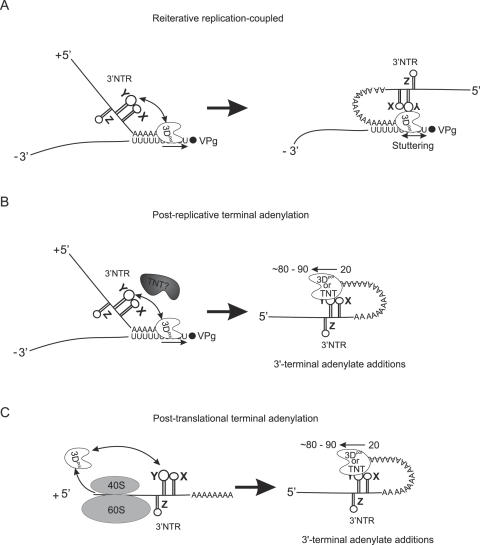Figure 6.
3′-Polyadenylation models. (A) The reiterative replication-coupled model. During the synthesis of a (+) RNA strand on a (−) RNA template, the nascent oriR just released from the RdRP molecule interacts with this RdRP in cis and ‘encourages’ it to repeatedly use the poly(U) template. (B) The post-replicative terminal adenylation model. The oriR of a newly synthesized (+) RNA [having a ∼20 nt-long poly(A)] binds and activates an enzyme with the adenylate transferase activity of viral or host origin, which accomplishes poly(A) elongation. (C) The post-translational terminal adenylation model. Viral RNA with a short poly(A), being translated, generates, among other proteins, the RdRP, which binds in cis the nearby oriR just liberated from the ribosome. This binding activates the enzyme intrinsic adenylate transferase activity.

